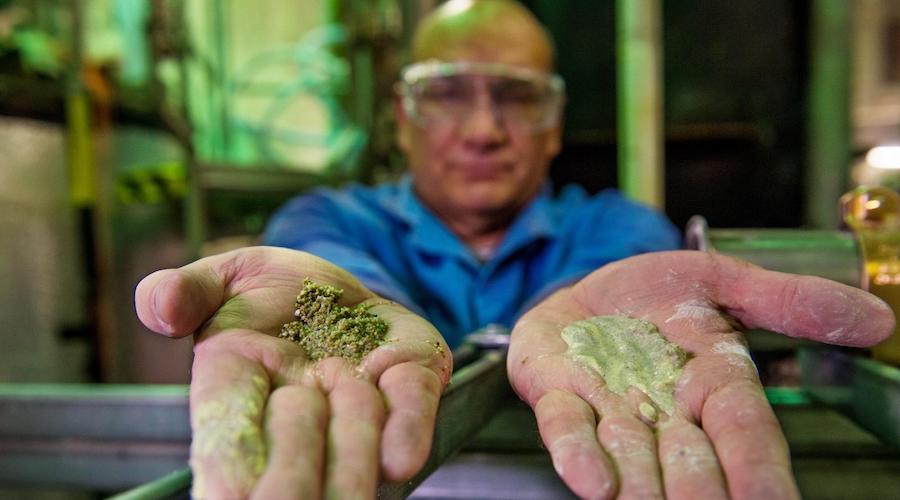
In a paper published in the journal Chemical Engineering & Processing: Process Intensification, the PNNL group explains that their newly developed separation technology quickly and successfully separated larger particles from smaller ones at various scales with several different solid-liquid mixtures.
The bench-scale demonstration maintained 94% flow over seven hours with no work stoppage from clogging. Further, the tests worked at a rate of 90 gallons per minute through a three-inch pipe, which is an optimal flow for industrial operations.
“That 90 gallons per minute flow rate was the number needed for potential industrial applications, and faster flow rates are achievable,” Leonard Pease, the lead inventor and a chemical engineer at PNNL, said in a media statement.
Pachinko design
Pease pointed out that the separation system resembles a series of hollow hockey pucks filled with rows of individual posts. Each row of descending posts is slightly offset from the row above. The team nicknamed it “pachinko” due to its resemblance to the popular game used at carnivals and on television game shows.
With the fluid stream moving at speeds up to 90 gallons per minute, the posts create unique flow fields that cause larger particles to move in the desired direction. Researchers have created “express lanes” within the system to remove larger particles. The novel post layout is a major improvement for turbulent flows.
In a full-scale system, multiple sets of pucks with different post designs will guide particles to their own express lane, separating relatively large pieces (about 1 centimetre or the size of a lemon-head candy) down to 20 microns (about the size of a white blood cell).
By stacking pucks one behind another, “you gain economies of scale without adding more costly infrastructure,” Pease said.
The separator works in both horizontal and vertical modes, including top-down and bottom-up flows.
Bump arrays
Inspired by bump arrays used in the medical field, Pease and colleagues Michael Minette and Carolyn Burns knew that large particles could be separated out of process streams at very low flow rates, but the process had not yet been demonstrated at high flow rates.
A small, slow stream—called laminar flow—is calm, steady, and predictable. As the flow becomes larger and faster—called turbulent flow—it starts to swirl.
They thought they would have to stick with laminar flow to keep the particles in the correct lanes. In a 3-inch steel pipe—common for nuclear waste operations—such a setting would restrict the flow rate to under five gallons per minute, which is not ideal. Running under turbulent conditions was the only way to achieve the desired operational flow rates.
The team, thus, designed an initial device to work in a vertical pipe.
“Conventional wisdom said the system would work only on a smooth, laminar flow, but we proved it also works on turbulent flow,” Minette said.
The success in turbulent flow conditions led the group to the concept of flow-following dynamics. “We realized that most of the larger particles were not bouncing off of posts, but were being driven by flow streams created by the posts,” Minette said.
In this design, the posts create flow streams that direct large particles to the express lane so they can be removed—greatly reducing erosion of the pins and extending the life of the devices.
“I was amazed that the pins didn’t break and erode—they held up to the flow and the aggressive materials,” Burns said. “This experimental evidence was a major advance in the functionality of the system.”




